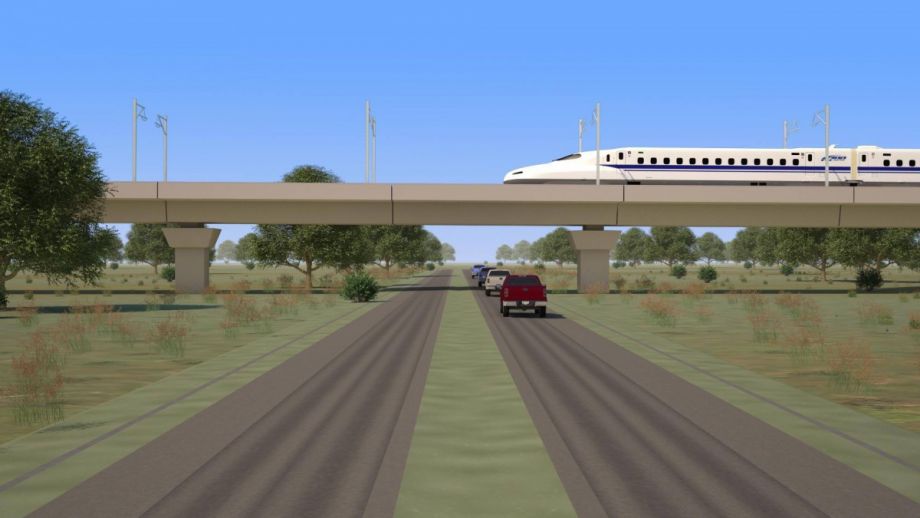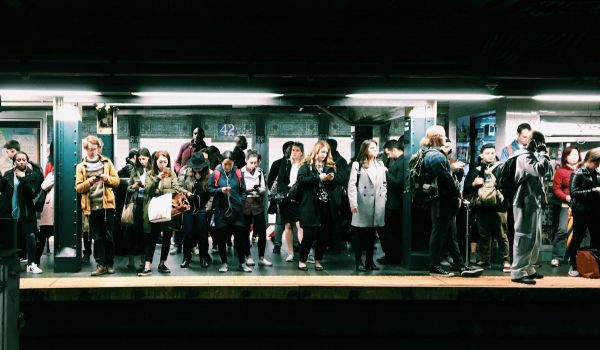Welcome to “The Mobile City,” our weekly roundup of newsworthy transportation developments.
It looks as though the private Texas Central Railroad will become the first outfit to complete a true high-speed rail line in America now that federal regulators have given its project two key go-aheads. TC executives say they’re ready to go with design and construction of the Dallas-Houston rail link, but the planned line still has some boulders strewn across its path that will have to be cleared before they can actually stick shovels in the ground.
A couple of states to Texas’ west, another train continues to pick up speed: the train carrying cities planning to make mass transit free. COVID-19 led city officials in Tucson to stop charging fares on its transit system back in March. Now, with ridership there on the rebound, the city wants to make that temporary policy permanent.
It’s not likely that Chicago will hop aboard that train anytime soon, but the Windy City is blazing a trail of its own. City planners there have released a plan for transit-oriented development that makes equity its top priority. The plan seeks to both promote walkable development and prevent gentrification in the West and South Side neighborhoods that current city TOD efforts have overlooked.
Texas HSR Gets Federal Green Light, But Is It Really Shovel-Ready?
While reports in the media say that Texas Central Railroad’s private backers are ready to proceed with design and construction of its planned 205-mph Dallas-to-Houston rail line, some of those same reports also say that the way forward for the project is not completely clear.
Two sister publications, Railway Track & Structures and Railway Age, took slightly different tones in their reports on the federal decisions that clear the way for the project to proceed to design and construction.
The decisions are known as a Rule of Particular Applicability (RPA) and a Record of Decision (ROD). The RPA sets up the regulatory and safety framework for the rail line. It’s noteworthy in that it is much stricter than current federal railroad safety standards, it applies to the whole of the railroad’s infrastructure and equipment — tracks, signals, trains and train controls, and operating and maintenance procedures — and that it was written specifically to use the proven, and very safe, technology developed for Japan’s famed Shinkansen bullet trains. TCR has chosen Japan Railway Central’s bullet-train system, which has operated for 55 years without a single accident or fatality, as the technology it will use in building the Dallas-Houston rail line.
The ROD closes the book on the environmental review and alternatives analysis for the project after six years. It chose an alignment that runs through nine Texas counties and includes an intermediate stop near College Station from a menu of six possible build options and a no-build alternative.
“This is the moment we have been working towards,” Carlos Aguilar, CEO of Texas Central Railroad, says in both reports.
In Railway Age, he gets more specific about when construction will start: “At this time, we anticipate construction starting in the first half of 2021. Engineers, architects and environmental experts are working on many fronts, including infrastructure, engineering and design; development of world-leading safety practices; design of the interior of the trains; and the rider experience.”
That, however, hinges on TCR’s lining up financing for the line. TCR strikes a confident tone on this subject in Railway Age, though Aguilar himself told another sister publication, the International Railway Journal, in April that COVID-19 could hamper the ability of the American, European and Japanese firms that plan to bankroll the rail line to come up with the funding according to TCR’s timeline. And a Houston Chronicle report on the federal green light notes that the line’s projected cost has doubled from $10 billion when it was first announced to $20 billion now.
In addition, it says, critics of the selected route are likely to file lawsuits seeking to halt construction. One of those critics, U.S. Rep. Kevin Brady (R), said in February of this year, “They hoped to break ground many many years ago. They are still saying they will break ground this year. No they will not.”
Brady also says that if the project doesn’t cover its costs, taxpayers will be asked to bail it out. He also opposes any attempt to steer public funds towards the line.
Tucson Climbs Aboard the Free-Transit Train
KOLD-TV in Tucson reports that city officials there have moved to extend a COVID-19-driven decision to eliminate fares on Tucson’s public transit system through at least the end of the year. And the extension could become permanent if the city’s mayor gets her wish.
In March, the city council voted to make the city’s buses, streetcar line and Sun Van paratransit free in response to the pandemic. The funding that made this possible runs out Sept. 28. The council voted on Sept. 22 not to reinstate fares, however, opting instead to extend free fares on Tucson transit through at least the end of the year. Council members cited the ongoing pandemic as the reason for their decision, noting that residents continue to apply for food, rent and energy subsidies by the thousands.
City Council member Steve Kozachik said that the city should “sharpen [its] pencils” and look for partners to fund the cost of providing free transit, which for now will have to come from the general fund. Mayor Regina Romero, however, urged the council to use the three-month extension to figure out ways to make the free fares permanent. “We should look at models that other cities in the United States have been moving towards, which is universal free ridership for the benefit of the community,” she said.
Bus ridership fell by 24 percent, and streetcar ridership plunged 63 percent, after the coronavirus lockdowns took effect. Some riders have returned with the resumption of classes at the University of Arizona.
Chicago Releases Equitable TOD Plan
The City of Chicago has released its first-ever transit-oriented development plan that makes equity its top concern. According to a report in Smart Cities Dive, the city’s new “Equitable Transit-Oriented Development (eTOD) Policy Plan” seeks to correct the severe imbalance in where development has occurred around Chicago rapid-transit stations.
Since 2016, the article notes, 90 percent of the more than 200 TOD projects approved by the city were located in the mostly white and affluent North and Northwest sides, the Loop and West Loop. Meanwhile, the city’s heavily Black South and West sides continue to depopulate as residents seek better amenities with access to transit. The eTOD plan seeks to stem that slide by steering new development to those underinvested parts of the city. In addition, the new plan seeks to mitigate displacement pressures affecting residents of neighborhoods experiencing rapid redevelopment such as heavily-Hispanic Pilsen.
The city also is banking that stimulating development in its nonwhite neighborhoods will help reduce many of the environmental and health disparities affect the city’s nonwhite residents.
“Every Chicagoan, no matter what side of the City they reside on, should have access to both our world-class transportation system and the recreational, housing, and environmental benefits that come with it,” Mayor Lori Lightfoot said in a statement. “The new eTOD Policy Plan will expand this access and give our most disinvested neighborhoods the long-overdue opportunity to enjoy these benefits while not being forced out of the community they call home.”
Know of a development that should be featured in this column? Send a Tweet with links to @MarketStEl using the hashtag #newstarts.

Next City contributor Sandy Smith is the home and real estate editor at Philadelphia magazine. Over the years, his work has appeared in Hidden City Philadelphia, the Philadelphia Inquirer and other local and regional publications. His interest in cities stretches back to his youth in Kansas City, and his career in journalism and media relations extends back that far as well.
Follow Sandy .(JavaScript must be enabled to view this email address)








_600_350_80_s_c1.jpg)






